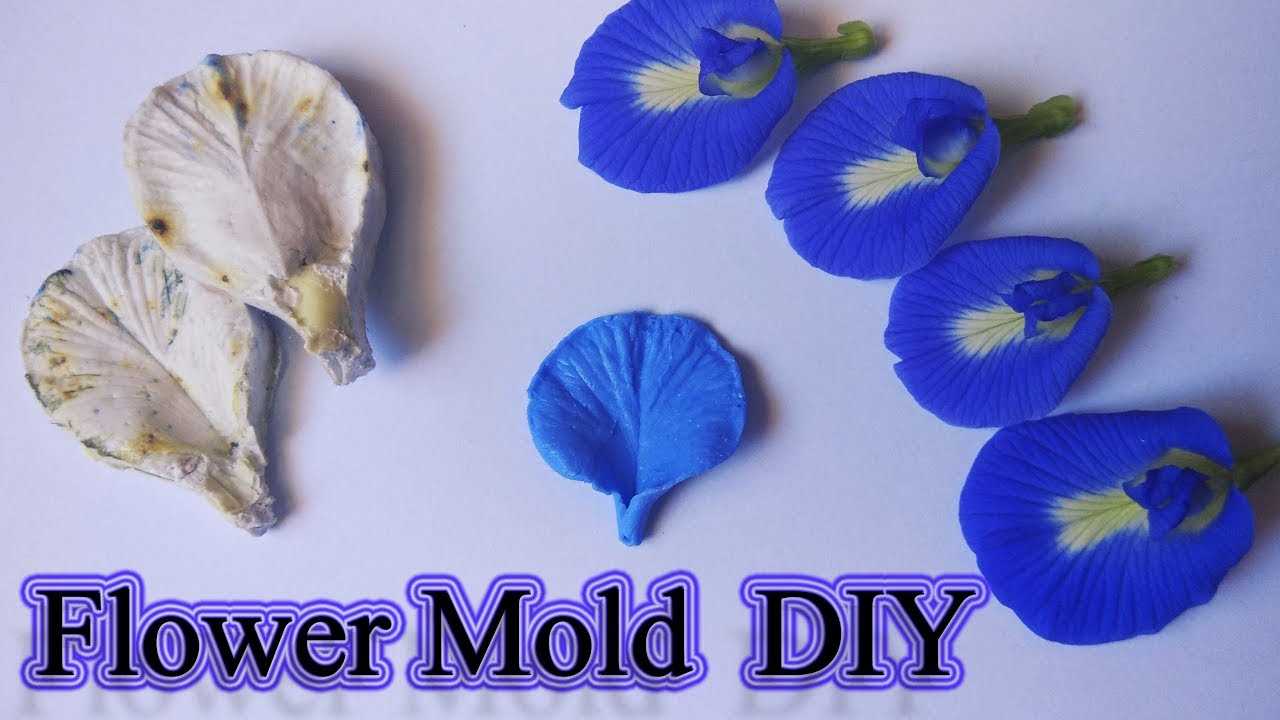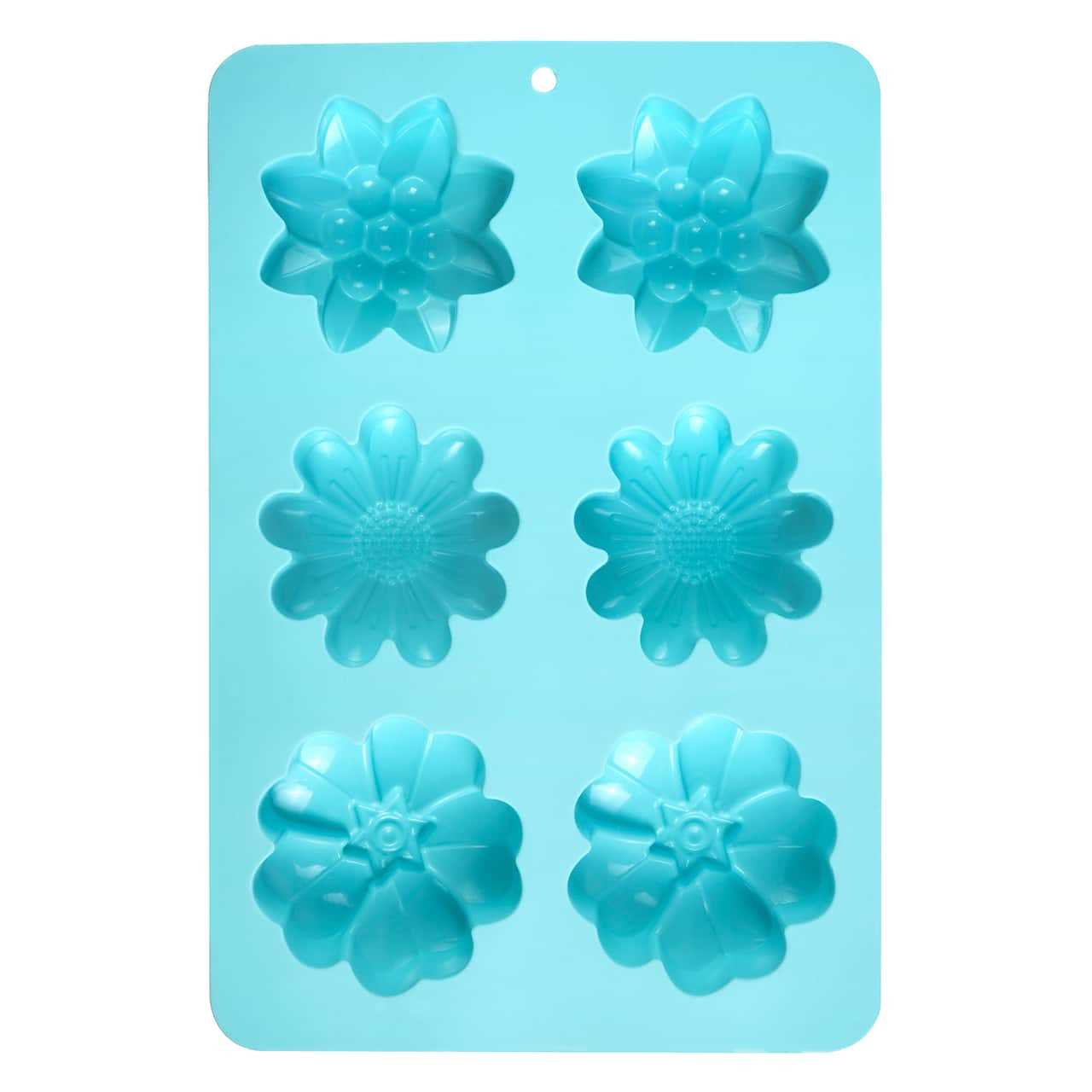- The Health Risks of Mould and How to Identify It
- Health Risks of Mould
- Identifying Mould
- How Mould Spreads and Thrives in Different Environments
- Spreading of Mould
- Thriving in Different Environments
- Preventing Mould Growth
- Preventive Measures to Keep Mould Out of Your Home
- 1. Control Moisture Levels
- 2. Proper Ventilation
- 3. Monitor Indoor Humidity
- 4. Maintain Proper Insulation
- 5. Regularly Clean and Dry
- 6. Use Mold-Resistant Products
- 7. Regularly Inspect and Maintain
- The Importance of Regularly Cleaning and Maintaining Your Home
- 1. Prevents the Growth of Mold and Bacteria
- 2. Reduces Allergens
- 3. Enhances Indoor Air Quality
- 4. Increases Longevity of Your Home
- 5. Creates a Positive and Stress-Free Environment
- How Mould Can Affect Your Indoor Air Quality
- Potential Health Effects
- Deterioration of Air Quality
- Aggravation of Allergies and Asthma
- Prevention and Control
- Conclusion
- Recognizing the Signs of Mould Allergies and Seeking Proper Treatment
- Common Symptoms of Mould Allergies
- When to Seek Treatment
- Prevention and Management
- The Benefits of Indoor Plants and Flowers for Your Well-Being
- Improved Air Quality
- Reduced Stress and Improved Mental Health
- Increased Productivity and Creativity
- Natural Humidifiers
- Improved Sleep Quality
- Conclusion
- How to Care for and Choose the Right Flowers for Your Home
- Choosing the Right Flowers
- Caring for Your Flowers
- Bringing the Beauty of Flowers into Your Home
- Q&A:
- What are the dangers of mould?
- How does mould affect respiratory health?
- Can mould cause skin irritation?
- How can you prevent mould growth in your home?
- What are some common signs of mould growth in a house?
- What are the benefits of having flowers in your home?
- Video: Make 24 Sugar Flowers With One Mould!
When it comes to our homes, two things often come to mind – mould and flowers. While mould is associated with dampness and can have detrimental health effects, flowers bring beauty and joy to our lives. This article will explore the dangers of mould and the importance of maintaining a mould-free environment, as well as the benefits of having flowers in our surroundings.
Mould is a type of fungi that thrives in damp and humid areas. It can grow on various surfaces, including walls, ceilings, and even furniture. Not only does mould have an unpleasant smell, but it can also cause allergic reactions and respiratory problems. In some cases, exposure to mould can even lead to serious health conditions like asthma and lung infections. It is important to be aware of the dangers of mould and take necessary precautions to prevent its growth in our homes.
On the other hand, flowers are nature’s gift to us, bringing color, fragrance, and beauty into our lives. Whether it’s a simple wildflower or an elaborate bouquet, flowers have the power to uplift our spirits and brighten up any space. In addition to their aesthetic appeal, flowers also have many health benefits. They can improve our mood, reduce stress levels, and even improve our cognitive function. Having flowers in our surroundings can create a positive and peaceful atmosphere.
It is important to strike a balance between keeping our homes mould-free and enjoying the beauty of flowers. By maintaining a clean and dry environment, we can prevent the growth of mould, while still being able to appreciate the natural beauty and benefits of flowers. So let’s say no to mould and yes to flowers, creating a healthy and beautiful living space for ourselves and our loved ones.
The Health Risks of Mould and How to Identify It
Mould is a type of fungus that can grow both indoors and outdoors. While some types of mould are harmless, others can pose serious health risks to humans. It is important to be able to identify mould in order to take the necessary steps to remove it and protect your health.
Health Risks of Mould
- Allergies: Mould spores can trigger allergic reactions in sensitive individuals. Symptoms of mould allergies may include sneezing, coughing, runny nose, itchy eyes, and skin rashes.
- Asthma and Respiratory Issues: People with asthma or other respiratory conditions may experience worsened symptoms when exposed to mould. Mould can cause respiratory irritation and can potentially trigger asthma attacks.
- Infections: Certain types of mould, such as black mould (Stachybotrys chartarum), can produce toxins that can cause infections in individuals with weakened immune systems.
- Toxicity: Some mould species produce mycotoxins, which are toxic substances that can have detrimental effects on human health. Prolonged exposure to these mycotoxins can lead to serious health issues, including neurological problems and organ damage.
Identifying Mould
Mould can appear in various forms and colors, but typically, it has a fuzzy or slimy texture. Here are some common signs of mould growth:
- Visible Growth: Mould often appears as black, green, or white patches on surfaces such as walls, ceilings, floors, and fabrics.
- Musty Odor: Mould has a distinctive musty smell. If you notice a persistent musty odor in your home or office, it may indicate the presence of mould.
- Water Damage: Areas that have been exposed to water damage or high humidity levels are more likely to develop mould. Check for mould in basements, bathrooms, kitchens, and areas where leaks or flooding have occurred.
- Allergic Reactions: If you or your family members experience unexplained allergies or respiratory symptoms that improve when you leave a certain building, it could be a sign of mould contamination.
If you suspect mould in your home or workplace, it is important to address the issue promptly. Professional mould remediation may be necessary to safely remove the mould and prevent its recurrence. Regularly inspecting for and addressing any moisture problems can help prevent mould growth in the first place.
| Steps to Address Mould: |
|---|
| 1. Identify the source of moisture and fix any leaks or water damage. |
| 2. Wear protective gear, including gloves and a mask, when cleaning mould. |
| 3. Use appropriate cleaning products to remove mould from affected surfaces. |
| 4. Properly ventilate the area during and after mould removal to ensure proper drying. |
| 5. Dispose of any contaminated materials, such as carpets or drywall, following proper protocols. |
| 6. Monitor for any signs of mould recurrence and address any underlying moisture issues. |
| 7. Consult a professional mould remediation service if the mould problem is extensive or if you have any concerns about the safety of cleaning it yourself. |
By understanding the health risks associated with mould and knowing how to identify it, you can take the necessary steps to protect yourself and your loved ones from its harmful effects.
How Mould Spreads and Thrives in Different Environments
Mould, also known as mold, is a type of fungus that can be found in various environments. It has the ability to spread and thrive under certain conditions, causing potential health hazards and damage to the affected area. Understanding how mould spreads and thrives is key to preventing its growth and ensuring a healthy living environment.
Spreading of Mould
Mould spores are microscopic and can easily travel through the air. They can enter a space through open doors and windows, on clothing or shoes, or even on pets. Once inside a building or home, the mould spores can settle on various surfaces. If the conditions are right, they can start to grow and spread rapidly.
High humidity levels, moisture, and stagnant air create the ideal environment for mould growth. Areas that are prone to water leaks, such as bathrooms, kitchens, and basements, are common hotspots for mould infestation. Mould can also grow on organic materials like wood, paper, and fabric, where moisture is present for an extended period of time.
Thriving in Different Environments

Mould can thrive in a wide range of environments, as long as the conditions are favorable for its growth. These conditions include:
- Moisture: Mould requires a moisture source to grow, such as leaks, high humidity, or condensation.
- Warmth: Mould prefers temperatures between 77°F (25°C) and 86°F (30°C). However, it can still grow in lower temperatures.
- Darkness: Mould can grow in both light and dark environments, but it prefers darkness.
- Organic Matter: Mould feeds on organic materials like wood, drywall, paper, and fabric.
- Stagnant Air: Lack of proper ventilation and airflow can contribute to mould growth.
In addition to these conditions, mould can also thrive in hidden areas, such as behind walls, in crawl spaces, or under carpets, where it may not be immediately visible. Regular inspections and maintenance can help identify and prevent hidden mould infestations.
Preventing Mould Growth
To prevent mould growth and ensure a healthy living environment, it is important to take the following preventive measures:
- Keep humidity levels below 50% by using dehumidifiers or air conditioners.
- Fix any water leaks or plumbing issues promptly.
- Properly ventilate areas prone to moisture, such as bathrooms and kitchens, using exhaust fans or opening windows.
- Clean and dry any wet or damp materials within 48 hours to prevent mould growth.
- Regularly clean and maintain your home or building, including carpets, upholstery, and ventilation systems.
By understanding how mould spreads and thrives in different environments, you can take the necessary steps to prevent its growth and ensure a healthier living space for you and your loved ones.
Preventive Measures to Keep Mould Out of Your Home
1. Control Moisture Levels
Mould thrives in moist environments, so it’s essential to control the moisture levels in your home to prevent mould growth. Here are a few tips:
- Fix any leaks or water damage immediately.
- Ensure proper ventilation in bathrooms, kitchens, and other areas prone to moisture.
- Use dehumidifiers and air conditioners to maintain optimal humidity levels.
- Regularly inspect and clean gutters and downspouts to prevent water accumulation around the foundation.
2. Proper Ventilation
Proper ventilation plays a crucial role in preventing mould growth. Here’s how you can improve ventilation in your home:
- Open windows and doors regularly to let fresh air circulate.
- Install exhaust fans in bathrooms and kitchens to remove excess moisture.
- Ensure that clothes dryers vent outside the house.
3. Monitor Indoor Humidity

Monitoring indoor humidity levels can help you identify potential mould growth areas. Purchase a hygrometer, a device that measures humidity, and keep the humidity levels below 50%. If necessary, use a portable humidifier or dehumidifier to adjust the humidity as needed.
4. Maintain Proper Insulation

Poor insulation can lead to condensation, which creates a favourable environment for mould growth. Make sure your home is properly insulated by:
- Sealing any gaps or cracks around windows, doors, and pipes.
- Insulating pipes to prevent condensation.
- Using insulation materials with moisture-resistant properties.
5. Regularly Clean and Dry
Regular cleaning and drying can help prevent mould growth. Here are a few tips:
- Clean and dry any spills or water damage immediately.
- Vacuum carpets and upholstery regularly.
- Wash and dry bedding, curtains, and other fabric regularly.
- Remove and clean mould-prone items, such as shower curtains, regularly.
6. Use Mold-Resistant Products
Consider using mold-resistant materials and products to reduce the risk of mould growth. Look for paints, sealants, and fabrics that are specifically designed to resist mould.
7. Regularly Inspect and Maintain

Regularly inspecting your home for signs of mould growth and taking preventative measures can help keep mould out. Here’s what you can do:
- Inspect potential problem areas, such as basements, attics, and crawl spaces, regularly.
- Repair any leaks or water damage promptly.
- Ensure proper drainage around the foundation.
- Monitor indoor plants for signs of mould growth in the soil or on the leaves.
- Keep an eye on your HVAC system and clean or replace filters regularly.
By implementing these preventive measures, you can significantly reduce the risk of mould growth in your home and create a healthier living environment.
The Importance of Regularly Cleaning and Maintaining Your Home
Regularly cleaning and maintaining your home is crucial for a healthy living environment. It not only helps to keep your space clean and organized, but it also prevents the buildup of dirt, dust, and allergens that can be harmful to your health. Here are some reasons why regular cleaning and maintenance are important:
1. Prevents the Growth of Mold and Bacteria
Regular cleaning helps to keep your home free from moisture and prevents the growth of mold and bacteria. Mold can cause various health issues, such as allergies, respiratory problems, and even infections. By regularly cleaning and maintaining your home, you can ensure that you eliminate any potential breeding grounds for mold and bacteria.
2. Reduces Allergens
Dust, pet dander, and other allergens can accumulate in your home if it is not cleaned regularly. These allergens can trigger allergies, asthma attacks, and other respiratory problems. By regularly dusting, vacuuming, and cleaning your home, you can reduce the presence of allergens and create a healthier living environment.
3. Enhances Indoor Air Quality
A clean and well-maintained home contributes to better indoor air quality. When your home is clean, there are fewer particulates and pollutants in the air, which can improve your respiratory health and overall well-being. Regularly cleaning and maintaining your home’s ventilation systems, such as air filters and ducts, can further enhance indoor air quality.
4. Increases Longevity of Your Home
Regular maintenance helps to identify and address any issues or damage to your home in the early stages. By taking care of these problems promptly, you can prevent further damage and increase the longevity of your home. Tasks such as inspecting for leaks, checking the roof, and maintaining proper drainage can all contribute to the overall health and durability of your home.
5. Creates a Positive and Stress-Free Environment
A clean and well-maintained home creates a positive and stress-free environment. When your home is clutter-free and organized, it can help to reduce anxiety and promote relaxation. Additionally, living in a clean and well-maintained space can give you a sense of pride and accomplishment.
In conclusion, regularly cleaning and maintaining your home is vital for both your health and well-being. It not only prevents the growth of mold and bacteria, reduces allergens, and enhances indoor air quality but also increases the longevity of your home and creates a positive environment. Make a cleaning schedule and stick to it to ensure that your home remains clean, organized, and safe for you and your family.
How Mould Can Affect Your Indoor Air Quality
Potential Health Effects
- Mould can release tiny spores into the air that can be inhaled. These spores can trigger allergic reactions, such as sneezing, coughing, and itchy eyes, in sensitive individuals.
- Exposure to mould can also cause respiratory problems, especially in people with asthma or other existing respiratory conditions.
- In some cases, mould exposure can lead to more severe health issues, such as fungal infections or toxic reactions.
Deterioration of Air Quality
Mould growth in indoor spaces can contribute to a decline in overall air quality. As mould grows and spreads, it releases volatile organic compounds (VOCs) into the air. These compounds can give off a musty odor and have the potential to cause respiratory irritation.
The presence of mould can also lead to increased humidity levels in the affected area, which creates an ideal environment for the growth of other allergens, such as dust mites.
Aggravation of Allergies and Asthma
- For individuals with allergies or asthma, exposure to mould can worsen symptoms and lead to increased frequency and severity of attacks.
- Mould spores can act as allergens, triggering allergic reactions and asthma symptoms, such as wheezing and difficulty breathing.
- In some cases, prolonged exposure to mould can even lead to the development of new allergies or worsen existing ones.
Prevention and Control
To maintain good indoor air quality and prevent mould growth, it is important to:
- Keep humidity levels in check by using dehumidifiers or properly ventilating areas prone to moisture, such as bathrooms and kitchens.
- Fix any water leaks or sources of moisture promptly to prevent mould growth.
- Clean and dry any water-damaged materials or areas within 24-48 hours to prevent the growth of mould and mildew.
- Regularly clean and vacuum dust and allergen-prone areas, such as carpets, upholstered furniture, and bedding.
- Use air purifiers with HEPA filters to help remove mould spores and other airborne allergens.
Conclusion
Mould can have significant impacts on indoor air quality and the health of individuals exposed to it. By understanding the potential health effects and taking preventive measures, you can help maintain a safe and healthy indoor environment.
Recognizing the Signs of Mould Allergies and Seeking Proper Treatment
Mould allergies can cause a variety of symptoms that may range from mild to severe. Recognizing the signs of mould allergies is important for seeking proper treatment and avoiding potential health complications.
Common Symptoms of Mould Allergies
- Nasal Congestion: One of the most common signs of mould allergies is nasal congestion or a stuffy nose.
- Sneezing: Frequent bouts of sneezing, especially in environments with mould growth, can be a sign of mould allergies.
- Runny or Itchy Nose: A constantly runny or itchy nose can indicate an allergic reaction to mould.
- Coughing: Persistent coughing, especially in combination with other symptoms, can be a sign of mould allergies.
- Watery or Itchy Eyes: Allergic conjunctivitis, characterized by watery or itchy eyes, can be triggered by exposure to mould.
- Skin Rash: In some cases, mould allergies may manifest as skin rashes or hives upon contact with mould spores.
- Wheezing or Difficulty Breathing: Severe mould allergies can lead to wheezing or difficulty breathing, and may require immediate medical attention.
When to Seek Treatment
If you suspect you have mould allergies based on the symptoms mentioned above, it is important to seek proper treatment. While mild symptoms can often be managed with over-the-counter antihistamines or nasal corticosteroid sprays, severe symptoms may require the assistance of a healthcare professional.
If your symptoms worsen or persist despite treatment, it is important to seek medical advice. A healthcare professional can evaluate your symptoms, perform allergy testing if necessary, and recommend a suitable treatment plan.
Prevention and Management
Preventing exposure to mould is crucial for managing mould allergies. Here are some tips:
- Keep the indoor environment dry: Use dehumidifiers and ensure proper ventilation to prevent mould growth.
- Fix any leaks: Addressing water leaks promptly helps prevent mould growth.
- Clean frequently: Regularly clean areas prone to mould growth, such as bathrooms and kitchens.
- Avoid outdoor mould: Limit your exposure to outdoor areas with high mould levels, such as wooded areas or compost piles.
- Use air purifiers: Consider using air purifiers with HEPA filters to remove mould spores from the air.
By recognizing the signs of mould allergies and seeking proper treatment, you can effectively manage your symptoms and improve your overall well-being.
The Benefits of Indoor Plants and Flowers for Your Well-Being
Improved Air Quality
Indoor plants and flowers not only bring beauty and life to your living space, but they also have the amazing ability to improve the air quality. Plants naturally remove toxins and pollutants from the air through the process of photosynthesis. By having indoor plants in your home or office, you can reduce the levels of carbon dioxide and other harmful chemicals, such as formaldehyde and benzene. This can lead to better respiratory health and overall well-being.
Reduced Stress and Improved Mental Health
Studies have shown that being around plants and nature can have a positive impact on mental health and well-being. Indoor plants and flowers can help reduce stress and anxiety levels, promote relaxation, and improve mood. The presence of greenery in our living spaces can create a calming and soothing environment, helping us to feel more at ease and at peace.
Increased Productivity and Creativity

Having indoor plants and flowers in your workspace or home office can boost productivity and creativity. Research has found that having plants in the workplace can enhance concentration, memory, and cognitive skills. The presence of plants can also stimulate creativity and problem-solving abilities, making them a perfect addition to any workspace.
Natural Humidifiers
Indoor plants and flowers can act as natural humidifiers by releasing moisture into the air through the process of transpiration. This can help to combat dry indoor air and improve the overall humidity levels in your home. Proper humidity levels are important for respiratory health and can also help alleviate dry skin, itchy eyes, and respiratory issues.
Improved Sleep Quality
Having indoor plants and flowers in your bedroom can promote better sleep quality. Some plants, such as lavender and jasmine, have calming and soothing properties that can help to relax the mind and body, making it easier to fall asleep and achieve a more restful sleep. Their pleasant scents can also create a peaceful and serene atmosphere, perfect for a good night’s sleep.
Conclusion
Indoor plants and flowers offer numerous benefits for your well-being, from improved air quality to reduced stress and increased productivity. They not only add beauty and aesthetic appeal to your living spaces but also have a positive impact on your mental and physical health. Consider bringing some greenery into your home or office and experience the many benefits that indoor plants and flowers can bring.
How to Care for and Choose the Right Flowers for Your Home
Choosing the Right Flowers
When choosing flowers for your home, it is important to consider not only their aesthetic appeal but also their compatibility with the environment and your personal preferences. Here are some factors to consider:
- Light requirements: Different flowers have different light requirements, so make sure to consider the amount of sunlight your home receives. Some flowers thrive in full sun, while others prefer shade.
- Watering needs: It is important to choose flowers that have similar watering needs to avoid overwatering or underwatering. Some flowers require frequent watering, while others are more drought-tolerant.
- Indoor or outdoor: Determine whether you want flowers for indoor or outdoor decoration. Some flowers thrive indoors, while others are more suitable for outdoor gardens.
- Climate: Consider the climate in your area. Some flowers are better suited for colder climates, while others thrive in warmer regions.
Caring for Your Flowers
Proper care is essential to keep your flowers healthy and vibrant. Here are some tips for caring for your flowers:
- Watering: Provide your flowers with adequate water, taking care not to overwater or underwater. Check the moisture level of the soil regularly and adjust your watering accordingly.
- Pruning: Regularly prune your flowers to promote healthy growth and remove any dead or damaged parts. This will also stimulate the production of new blooms.
- Fertilizing: Feed your flowers with a balanced fertilizer to provide them with essential nutrients. Follow the instructions on the fertilizer package for the best results.
- Protecting from pests: Monitor your flowers for any signs of pest infestation, such as aphids or mealybugs. Take appropriate measures to control and prevent pest damage.
- Providing support: Some flowers, such as climbing plants, may require support structures like trellises or stakes. Make sure to provide them with the necessary support to prevent them from falling or bending.
Bringing the Beauty of Flowers into Your Home
Flowers can add beauty, color, and fragrance to any space. Here are some ideas to bring the beauty of flowers into your home:
- Flower arrangements: Create beautiful flower arrangements by combining different flower types, colors, and textures. Arrange them in vases or decorative containers to enhance their visual impact.
- Hanging baskets: Hang baskets filled with flowers to add a touch of beauty to your porch or balcony. Choose flowers that cascade or trail for a stunning effect.
- Window boxes: Install window boxes filled with colorful flowers outside your windows to enjoy their beauty both indoors and outdoors.
- Indoor potted plants: Bring the beauty of flowers indoors by placing potted plants in various areas of your home. Choose plants that can thrive indoors and match your interior décor.
By selecting the right flowers and providing them with proper care, you can enjoy the beauty and benefits of flowers in your home all year round. Experiment with different types of flowers and arrangements to create a visually stunning and fragrant environment.
Q&A:
What are the dangers of mould?
Mould can cause a variety of health problems, including allergic reactions, respiratory issues, and even infections. It releases spores into the air, which can be inhaled and trigger these health issues. It can also cause damage to buildings and homes if left untreated.
How does mould affect respiratory health?
Mould can worsen existing respiratory conditions, such as asthma or allergies. The spores released by mould can irritate the airways, leading to coughing, wheezing, and shortness of breath. In more severe cases, it can cause respiratory infections or trigger asthma attacks.
Can mould cause skin irritation?
Yes, exposure to mould can cause skin irritation. Some people may experience redness, itching, or rashes after coming into contact with mould or its spores. It is important to clean and remove mould promptly to avoid skin irritation.
How can you prevent mould growth in your home?
To prevent mould growth in your home, it is important to control moisture levels. This can be done by using dehumidifiers, ensuring proper ventilation, fixing any leaks or water damage, and regularly cleaning and drying areas prone to moisture, such as bathrooms and kitchens.
What are some common signs of mould growth in a house?
Some common signs of mould growth in a house include a musty odor, visible mould growth on walls or ceilings, discolored patches or stains, and an increase in allergy or respiratory symptoms among occupants. If you notice any of these signs, it is important to address the mould problem promptly.
What are the benefits of having flowers in your home?
Having flowers in your home can provide numerous benefits. They can improve mood and reduce stress, enhance indoor air quality by absorbing carbon dioxide and releasing oxygen, and add a touch of beauty and natural elegance to any space. Additionally, some flowers have therapeutic properties and can help with relaxation or sleep.
Video:
Make 24 Sugar Flowers With One Mould!







